A Frontline In the Battle Against Climate Change
The Sundarbans fights hard for Bangladesh on the frontlines of climate change.
Its 6000 sq. km. of greenery and water is the buffer between Bangladesh and the “beating heart of monsoon Asia”, the Bay of Bengal.
Each monsoon season, the Bay throws storms and cyclones at the land, it rages and heaves against the shores, but the mangrove forest stands firm, resolute.
The snaking roots of the mangrove clutch the mudflats, keeping the soil from being washed away. It bears the lash of wind and surge of tide that would otherwise strike at the cities that have sprung up on its northern boundaries — cities that wear shining arrogant badges of “GDP.”

The Sundarbans mudflats are drowned twice a day by the tides from the Bay, leaving its trees knee-deep in brine and gasping for air. The mangroves overcome the challenge through its snorkels — called pneumatophores, which stand taller than the salty tides and permit the trees to breathe.
The Sundarbans is an invaluable nursery for fish and a breeding ground for shrimp, both vital for the thriving fishing industry in Bangladesh. It is a rich ecosystem that harbors and nurtures tigers and crocodiles, monkeys and man; tourists flock to gawk at its natural riches and pump money into the country’s coffers.
Mangrove forests sequester more carbon, it is said, than tropical forests – and the Sundarbans is the largest mangrove forest there is.
The Threat Of Increasing Salinity
“In a sense, Bangladesh is the Himalayas, flattened.”
This largest mangrove forest is also an ecosystem under threat.
A neo-tectonic shift has been tipping the delta steadily eastward, depriving its western parts of vital freshwater and turning it too saline for the fragile ecosystem to handle.
If this were not threat enough, the Sundarbans today faces a far more formidable opponent: man.
A regular freshwater influx from rivers is key to the survival of the Sundarbans delta. The barrage built in India at Farakka (West Bengal) dams up one of the forest’s biggest lifelines, the Ganges, and confiscates copious amounts of the sweet water needed to keep the brine in check.
This means the sea-brine has a free hand to romp farther inland than it would have if opposed by a robust freshet of river water. The resulting increase in salinity destroys the endangered Sundri trees ( Heritiera fomes) which are top-dying out; elsewhere, mammals find the water unpalatable, and thus both the flora and fauna of the western Sundarbans are under threat. The soil, which is fast becoming too saline for agriculture, is forcing the settlers in that part of the Sundarbans to migrate.
The barrage hurts the Sundarbans in other ways. It impounds the thousands of tons of sediment the Ganges has brought down from the Himalayas over aeons to enrich the delta, prompting Willem van Schendel to say, “In a sense, Bangladesh is the Himalayas, flattened.”
This sediment is crucial to beefing the delta up and defending the coastline from rising seas and storm surges. The Farakka holds the sediments back, and in consequence the Bangladesh coastline sinks, erodes, becomes progressively vulnerable.
Ships Carrying Hazardous Cargo

If the Farakka’s threat is from across the border, the Sundarbans faces an internal threat from Bangladesh, in the form of ships.
Hundreds of ships, big and bigger, chug unauthorized through reserved forest rivers, belching exhaust fumes, leaking oil, coughing sulphur and billowing wakes so large they erode the river banks.
These ships used to ply another, authorized, channel — from Mongla to Morrelganj, through the Ghasiakhali.
The Bangladesh Inland Water Transport Authority (BIWTA) closed that route in 2011; it silted up; people sunk shrimp farms there and (presumably) made a lot of money.
Dredging the Ghasiakhali would cost Bangladesh hundreds of crores of Takas (BDT). It would also take governmental willpower to fly in the face of powerful shrimp farm owners. Authority took the easy way out – it allowed ships to pass through the forests.
Pesticides, cement, fly ash, coal, oil, sand — they all come through the Sundarbans now, unchecked, unmonitored, unmindful of the environment. “Mobile bombs,” a professor of Bangladesh University of Engineering and Technology termed them, waiting to explode. And directly in the path of these “bombs” lie three dolphin sanctuaries.
"Jongla theke Mongla adhik gurrtu purno"
The Mongla port is more important than the jungle (Sundarbans)
“Bomb” is no exaggeration, and the oil-spill in December 2014 was no exception. In September 2014, two ships spilled their cargos in the forest within two weeks of each other. One carried cement and the other, coal ash – over 600 metric tonnes of each. Barely anyone speaks of these mishaps because to discuss it would lead to preventive steps — and the shipping route and resulting increase in GDP is too precious to jeopardize.
When 358,000 liters of heavy fuel oil stained the Sundarbans in December last year the shipping minister, with an eye firmly fixed on losses from having to close the forest shipping route, denied that the spill had any adverse impacts. At the time of the denial, no study had been done, no information gathered on which he could base his pronouncement.

Independent researchers from Khulna University, led by Prof. Abdullah Harun Chowdhury, were more thorough. They transected the length of the two rivers, Sela and Passur, as well as the channels (khals), and made meticulous empirical observations. They found that there was a distinct decline in phytoplankton diversity and abundance, and a drastic drop in productivity, in the contaminated areas. Prof. Chowdhury now plans a year-long follow-up study to determine the true impact of the spill, and wants to keep the work independent of government interference. He does not want the study to go the way the UN report went, with its tainted data and its euphemistic language twisted to suit government lies.
Under pressure from the powerful shipping lobby, the government opened the Sela river to ships again, less that a month after the oil spill.
To add to the sense of foreboding, if there are about two hundred ships plying up and down the rivers today, the traffic is set to double with the looming specter of the Rampal coal-fired plant planned just outside the northern border.
The Rampal Coal-Fired Plant
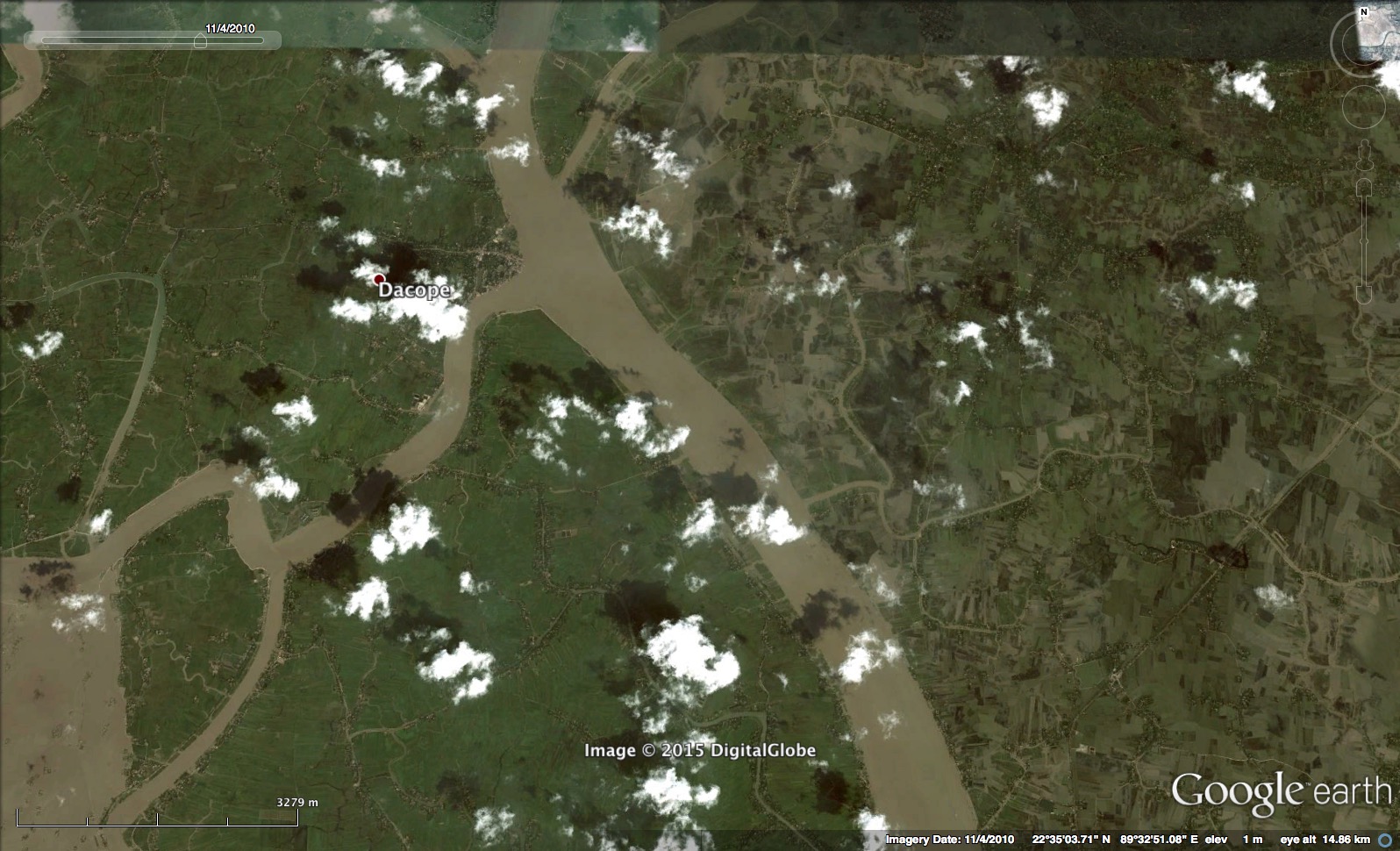
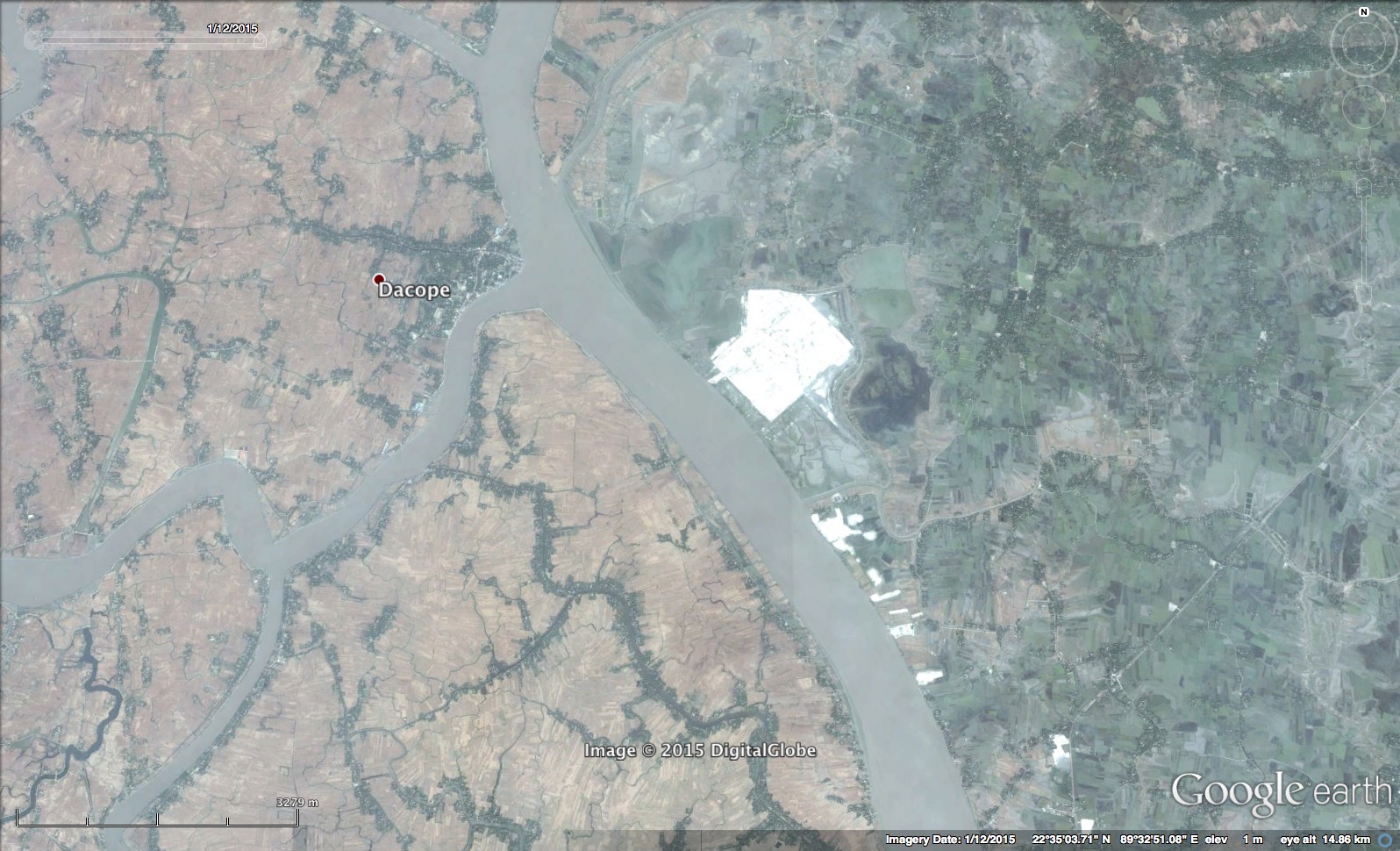
The governments of India and Bangladesh are building a thermal power plant, with 1320 MW rated capacity, upstream of Mongla over an area of 1834 acres. Fishermen, farmers, and small shrimp farmers who depended on that land and those waters have been forced to abandon it, with little or no compensation.
Here’s the rub: red category industries (heavily polluting industries listed here) are not supposed to come up within 14 km of reserved forests and eco-sensitive areas like the Sundarbans. Environmental Impact Assessments are mandatory before something like this is planned.
The Bangladeshi government did it all backwards. They planned, they coerced and forcibly evicted thousands of people and acquired land, and only then, in the face of mounting public pressure, did they commission what turned out to be a clearly biased EIA.
Governments are mandated to throw an EIA open to public comment. The Bangladesh government complied – but refused to consider valid objections, and its outright rejection by scientists. The government went ahead and signed the MoU with India’s National Thermal Power Corporation anyway.
Here’s how this will affect the Sundarbans:
Bangladesh will have to import the coal. The current dilemma is between importing inferior quality coal from India to keep prices low, and superior quality coal from Australia to keep sulphur content and pollution down.
The coal will come via massive ships to Akram point, 30 kilometers into the Sundarbans, an estimated 59 times a year. From there it will be sent by lighterage up the 70 or so kilometers along the Passur and Sela to the Rampal plant, with approximately 200 such shipments each year.
Coal, dust, fuel oil, wastes: they will all lace the waterways of this UNESCO World Heritage Site. The increased traffic means increased wakes, sounds, and ships anchored in the middle of the rivers with engines running — everything that is happening today, doubled. But this time with guaranteed toxic cargo.
Now imagine the power plant itself. It will burn this coal. If the coal is of high quality, the sulphur in the emissions will be lesser, but the cost of electricity produced will be higher. If the coal is cheap, the emissions will be as dirty as they come, but the power generated will be cheaper. Given the government’s track record on environment, which coal is it likely to chose?
Then there is the matter of how the waters in the protected areas will change. A coal-fired plant is immensely inefficient. It uses only 33% of the heat generated by burning coal to make electricity. The rest is released into the atmosphere, or absorbed by water that is circulated to cool the plant.
This water — some two billion gallons of it every day, enough to sustain 250,000 people — will come from the Passur River. It will then return to the river, but with chlorine and other toxic chemicals added in an effort to decrease algal growth. Moreover the returning water will be hotter by 20-25 degrees Fahrenheit.
Thermal pollution, says Prof. Chowdhury of Khula University, who has studied the potential impacts of this proposed plant on the mangroves, can increase the heart rates of fish and decrease their fertility. And the plant is sited hardly ten kilometers from the dolphin-rich Dhangmari sanctuary.

Imagine also the wastes this thermal plant will generate: fly ash and bottom ash, hazardous wastes that contain arsenic, lead, mercury, and radioactive elements which will be buried or transported off site.
Either way, the wastes pose danger. Buried, it will leach into the groundwater, affecting nearly a million people living in and near the forests. Transported, it will traverse through the forests again, with the constant threat of capsizing and polluting the fragile ecosystem.
This catalog of ways in which setting up the dirtiest power plant technology on the fringes of the largest unbroken stand of mangroves, and near an incredibly biodiverse UNESCO world heritage site, is hardly exhaustive. What is astonishing is that the assault on the Sundarbans doesn’t stop with this plant.
Land Sold To The Dirtiest Of Industries
Between the parcels of land acquired along the Passur river are the looming threats of other extremely dirty industries: oil and gas plants, cement factories, and ship-breaking yards. The Bangladesh Petroleum Corporation, for instance, has sunk massive reservoirs for a hundred thousand gallons in Mongla.
These are all Red Category Industries, and all are well within the 10 kilometer radius that is sacrosanct near a reserved forest – a recipe for severely endangering a vital ecosystem.
The rebuttal to such arguments is fired from the moral high ground of ‘development’: Don’t we want progress, don’t we want our citizens to prosper? And if the answer is yes, why should the Sundarbans be a factor in deciding the growth trajectory of a country?
Because:
Buy Cheap Tramadol Mastercard 1) Khulna is in the top ten cities that stand to suffer the most as a percentage of GDP in the event of rising sea levels and increasing storm surges.
https://www.petwantsclt.com/petwants-charlotte-ingredients/ 2) Bangladesh is in the top five countries most in peril when it comes to climate change and coastline degradation.
The Sundarbans is the main — in fact, only — defense against a future that threatens rising seas and destructive monsoons. The brute force of Aila and Sidr was a teaser of what is to come, and the fact that the damage from those two cyclones was relatively contained is proof enough of the effectiveness of the mangrove buffer.
‘Development’, with its shiny GDP badge, will be for naught if the Sundarbans were to die.
Also In This Series
Part 1: The Oil Spill
Then
Part 2: A Toxic Clean up
And
Part 3: Tale Of Two Studies
Part 4: Ships Will Ply



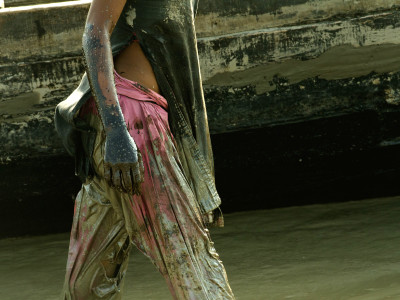
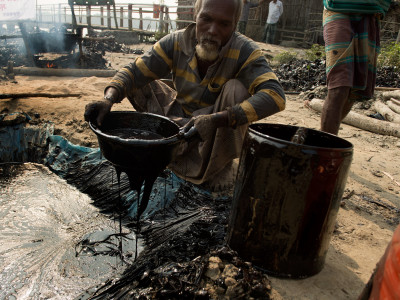
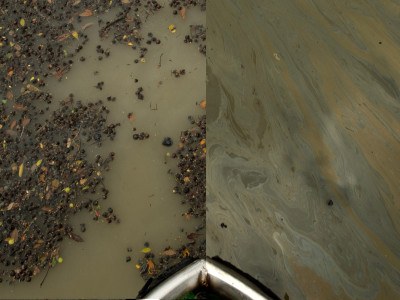
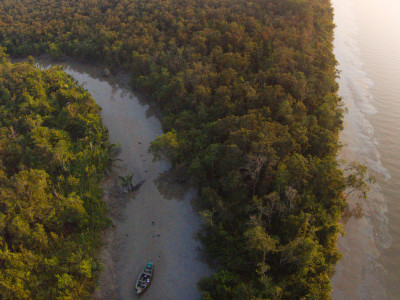
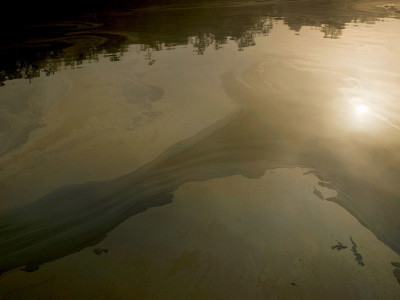
[…] rivers and what we are doing to kill them resonates. After all, Peepli as a concept began with this Arati Kumar-Rao exploration of the many ways in which another of the world’s storied rivers, the Brahmaputra, is at […]